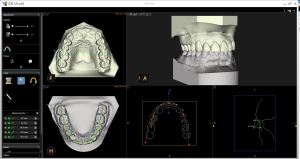Evolve from the Stone Age: Digitizing Existing Stone Models
By Matt Hendrickson
Orthodontic Business Director, Carestream Dental
 At the busy orthodontic practice, there’s simply not enough room for stone model storage. Well-established practices can have decade’s worth of models taking up space onsite or gathering dust and wasting money in offsite storage. Even after patients move on and the appropriate number of years have passed, destroying stone models is also costly.
At the busy orthodontic practice, there’s simply not enough room for stone model storage. Well-established practices can have decade’s worth of models taking up space onsite or gathering dust and wasting money in offsite storage. Even after patients move on and the appropriate number of years have passed, destroying stone models is also costly.
Like almost everything these days, the answer is digital. Intraoral scanners have made it easy to take digital impressions and software can render a digital model for case presentation. But what about all those existing stone models from before digital solutions were available? Fortunately, intraoral scanners can be also used to scan conventional models. And, when preferred, there are multi-functional extraoral imaging systems that not only capture panoramic, cephalometric and 3D images, but can also scan existing models and traditional impressions in order to digitize them at no additional per model cost.
Once models have been digitized, they can be manipulated and analyzed in 3D. Some orthodontic model software solutions can even automatically number teeth, take measurements and track occlusion. The software can mount the models in a finished base so they can be quickly and easily presented to the patient or transferred to the lab. In addition to using digital models as a tool for case acceptance, digitizing stone models saves space and cuts back on the hassle of searching through dusty storage boxes.
Most orthodontists agree that digital impressions are the new norm in the industry, but that doesn’t wipe away years—and boxes full—of stone models. To create more space in your practice, for better analysis and to bring your orthodontic practice out of the stone age, consider digitizing your existing models.






